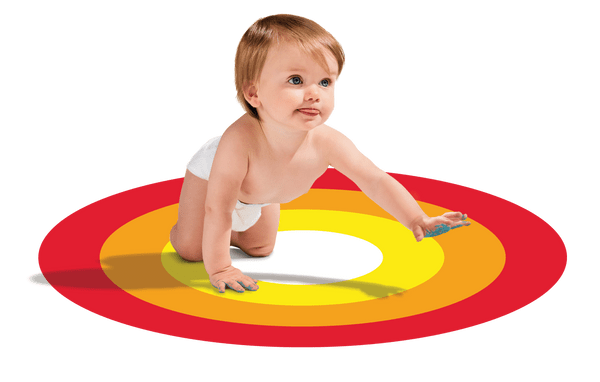What is teething?
Teething happens when your baby’s teeth start pushing through the gums and into their place in the mouth.2,3 However, every baby develops differently, so the teething signs and timings can vary.
In a survey of parents around the world conducted by Nurofen for Children,† parents reported that:4
- Most babies start to experience teething pain between 4 and 12 months
- Teething pain typically lasts anywhere from 1 week to 4 months
- The top 2 most common symptoms are restless sleep and red & swollen gums
- When teething, over half of babies’ experience pain at least once a day
- Most parents describe their child’s teething pain as ‘moderate’
†Online survey of n=1,357 parents with children under 2 years old experiencing teething pain, conducted in June 2017 across 5 markets (United Kingdom, Australia, Italy, Russia and Germany).4
How to use a baby teeth chart
While every baby develops differently, a baby teething chart or toddler teeth chart can give a rough estimate of when a particular tooth will push through, and at what age it is likely to be lost. A teething chart by age may help you to be better prepared for your baby’s teething needs.
Baby teeth chart: eruption and shedding
Baby teeth are quite different from permanent teeth. They have shorter roots to allow space for permanent teeth to grow underneath them. Baby teeth also have a thinner outer covering (enamel), which makes them look whiter but also means they are more likely to decay. It is important to take care of baby teeth as they help your child chew food easily, pronounce words properly, and hold a place in the jaw for permanent teeth to come through later. Decayed baby teeth can damage the permanent teeth underneath.1
Permanent teeth chart: eruption
Permanent teeth, also known as adult teeth or secondary teeth, start to develop in the jaws at birth and continue after the child is born. They first begin to erupt at about 6 years of age, and at about 21 years of age, the average person has 32 permanent teeth – this means that we have 12 more teeth as adults than our full set of baby teeth. Our baby molars become replaced by premolars (also known as bicuspids) and the additional adult teeth include eight molars as well as four third molars (also known as wisdom teeth).8,9
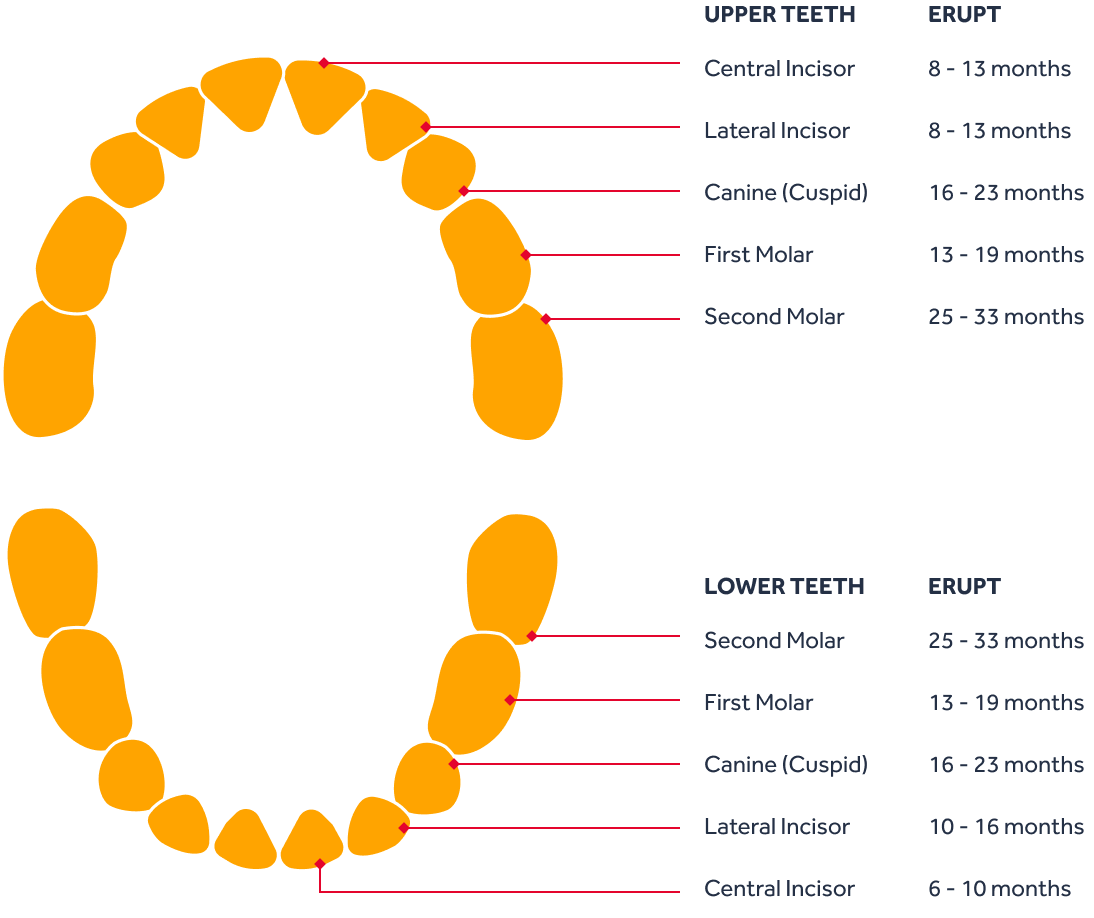 Stages of teething
Stages of teething
The timing of teething is different between every child. One baby might start teething at 4 months, while another may not start till 12 months. Most children will have all their primary or “milk” teeth by the time they are 3 years old.8
See below to learn more about the typical baby teeth order and what you might expect at each stage of teething:
6-10 months
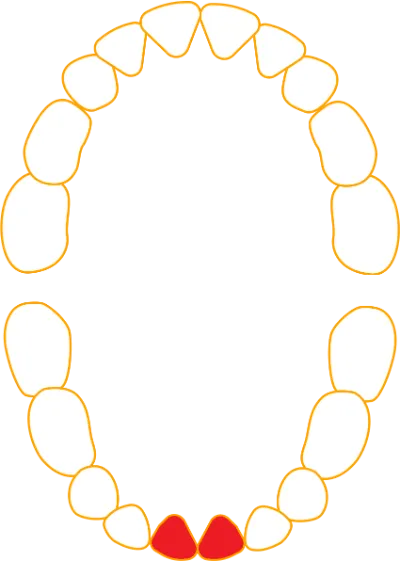
8-13 months
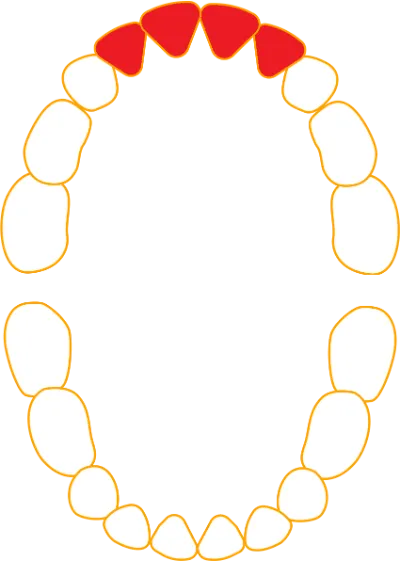
10-16 months
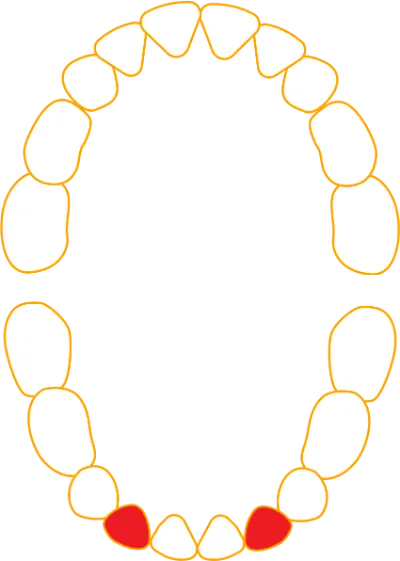
13-19 months
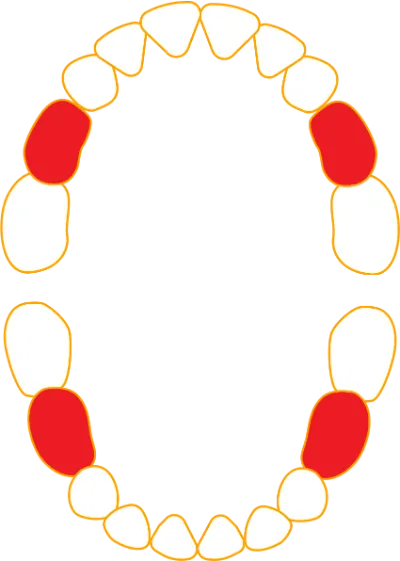
16-23 months
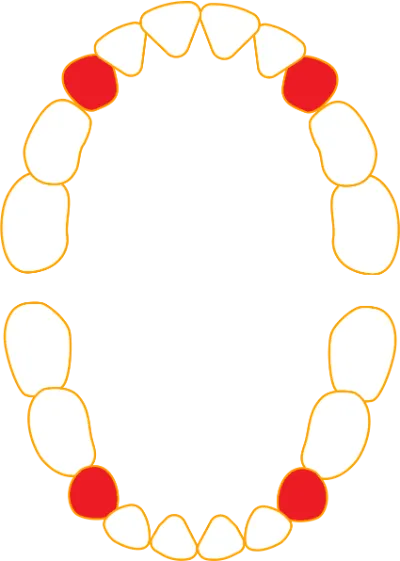
23-33 months
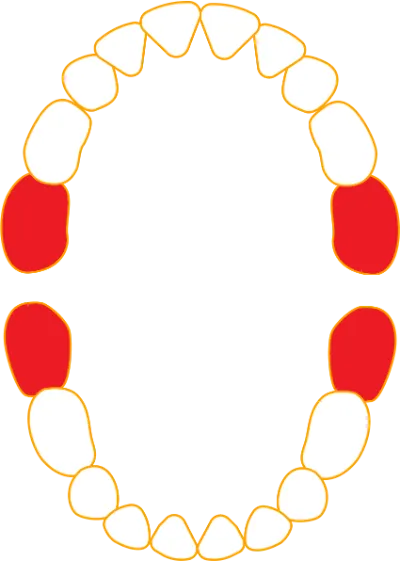
My baby’s teeth have started coming in…now what?!
When trying to soothe a teething baby, extra cuddles and hugs can go a long way. You may also find it helpful to lightly massage their gums with a clean finger or give them a chilled teething ring to chew on.2 If they are quite distressed, you’ll also want to consider using a pain-reliever such as Nurofen for Children.10
It’s important to look after your baby’s teeth, and the best way is to get into the habit of brushing and flossing them right from the beginning.11,12 It’s also best to limit sugar as much as possible as it can lead to tooth decay. Sugar is a source of food for the bacteria that live in the mouth. These bacteria produce acid, which can damage the outer surface of the tooth.13
It is also recommended to visit a dentist as soon as your baby’s teeth start to come out. Your dentist will be able to make sure that your baby’s teeth are all coming out as expected and give you valuable advice on how to keep your baby’s teeth healthy and strong.11
For Teething Pain Relief for Children
References:
- Health Direct. How your baby’s teeth develop. Available from: https://www.healthdirect.gov.au/ (accessed November 2022).
- Memarpour M, et al. BMC Oral Health 2015;15:88.
- Massignan C, et al. Pediatrics 2016;137(3):e20153501.
- Harris Interactive. Nurofen for Children Teething Survey, 4th July 2017.
- Zimmerman B, Shumway KR, Jenzer AC. Physiology, tooth. StatPearls [Internet]. Treasure Island (FL): StatPearls Publishing; 2022 Jan.
- Australian Dental Association. Teething chart: when the teeth come marching in.
- Better Health Channel. Teeth. Available from: https://www.betterhealth.vic.gov.au/ (accessed November 2022).
- Better Health Channel. Teeth development in children. Available from: https://www.betterhealth.vic.gov.au/ (accessed November 2022).
- American Dental Association. Eruption charts. Available from: https://www.mouthhealthy.org/ (accessed November 2022).
- The Royal Children’s Hospital Melbourne. Acute pain management. Available from: https://www.rch.org.au/ (accessed November 2022).
- org.au. Babies and toddlers 0–3 years. Available from: https://www.teeth.org.au/ (accessed November 2022).
- Health Direct. Dental care for children. Available from: https://www.healthdirect.gov.au/ (accessed November 2022).
- Better Health Channel. Tooth decay. Available from: https://www.betterhealth.vic.gov.au/ (accessed November 2022).
This article is for general information only and not intended as a substitute for medical advice. All information presented on these web pages is not meant to diagnose or prescribe. In all health-related matters, always consult your health professional.
Always read the label and follow the directions for use. Incorrect use could be harmful. RKT-M-08194.
